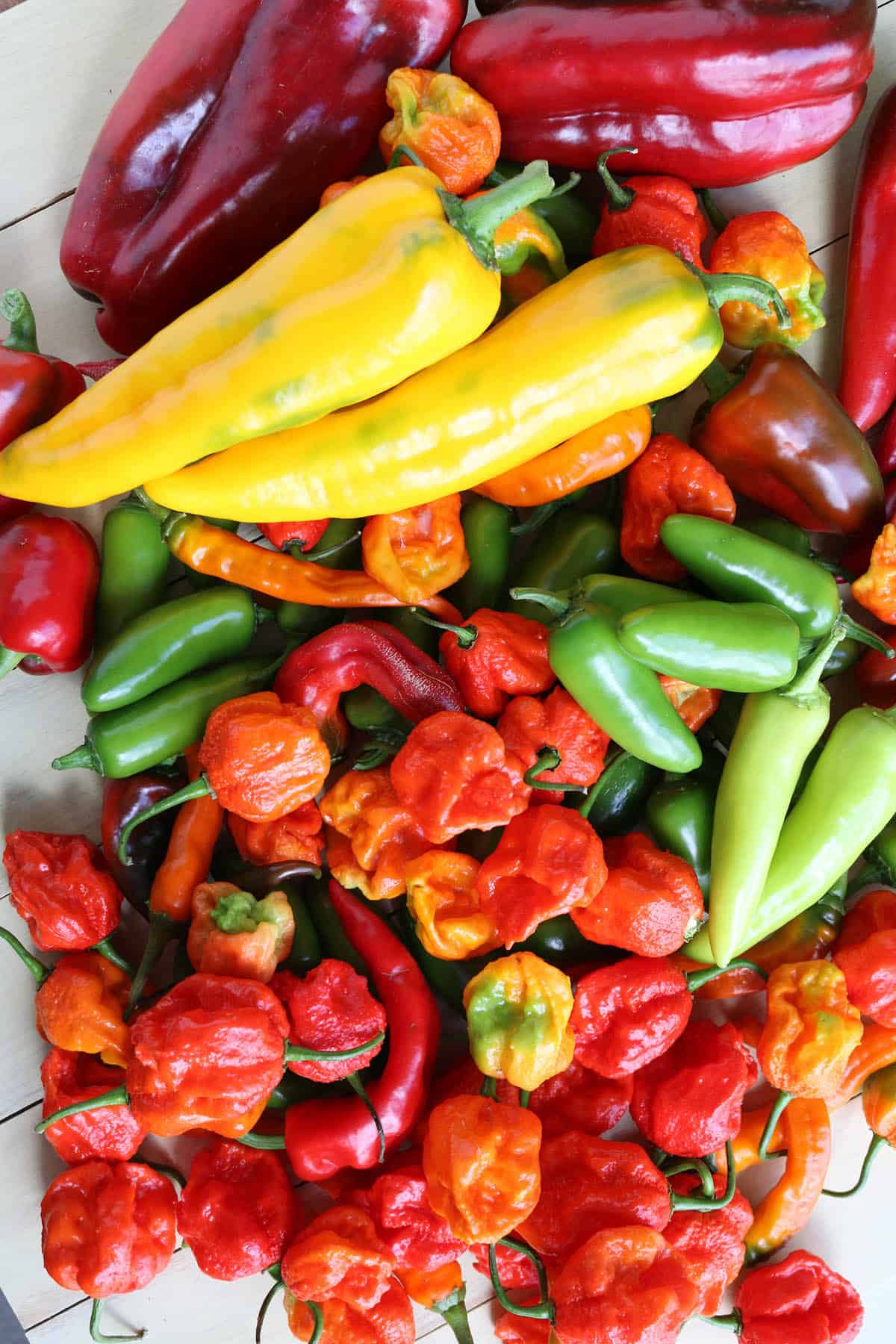Chili peppers originated in South America, but are now grown around the world because they are used as spices or as medicine. Christopher Columbus reportedly sampled a chili pepper and thought it was a relative of the black pepper, dubbing it a “pepper”, which is inaccurate, though the name persists today. In South America, they were known as Aji.
Here is a useful link on Wikipedia Chili Pepper Institute
On his return to Europe, the “aji” was renamed the “Calcutta Pepper” by Leonard Fuchs, a German botanist who believe that Columbus had found India. And thus it began. Also, interestingly enough, the original word for chile peppers in the Mexican Indian language, Nahuatl, is “chilli.” The majority of our jalapeño peppers come from Mexico, where the natives eat them as snack foods, plucking them in droves from sidewalk carts and fields. The red variety of the jalapeño is a bit milder than the green variety, and sweeter as well. They are also milder than their cousin, the serrano, another popular chile pepper, though not as widely known as our favorite, the jalapeño. That spiciness we all love and crave comes from a compound called capsaicin that is found in all hot peppers. Interestingly enough, capsaicin is found in no other plant than the chile pepper. A single drop of this substance combined with 100,000 parts water is still noticeably spicy. Isn’t that great! Note: The placenta is about sixteen times hotter than the rest of the pepper and is usually removed along with the seeds (another hot part of the pepper) when preparing food. If you’re looking for a good kick with your dishes, leave it in (along with the seeds), and see what you get. Oh yeah! Scientists have observed that many rodents and other small mammals do not particularly like the jalapeño, possibly an evolutionary advantage developed through the generations to protect the peppers from evildoers. Birds, however, seem to be unaffected by the pepper heat. This, of course, is an advantage to our friend, the chile, because when birds eat the peppers, they disperse the seeds through their droppings all across the land, thus perpetuating that thing we all love so much (though admittedly in a rather gross manner). After time, you can build up a tolerance to the heat by continuing to eat hot peppers in small doses, but you’ll always have the initial burst of spicy flavor with our friend, the jalapeño. Additionally, when handling chile peppers, you should always wear rubber gloves to avoid contact with the pepper oils. The oils can cause a burning sensation on the skin. In a pinch you can use the yellow rubber gloves that many people use while washing dishes, but thin latex gloves work wonderfully for maneuverability. It’s really a lot easier to cut and handle the peppers with these types of gloves. Learn More about How to Stop the Chili Pepper Burn In 1912, a pharmacologist named Wilbur Scoville invented a standard for measuring the capsaicin in peppers, and subsequently the power of that pepper heat. Scoville ground chile peppers into a mixture of sugar water and alcohol. He then had five tasters sip the mixture and grade it for hotness. Since then, we’ve come up with more sophisticated methods for grading the hotness of peppers into units called “Scoville Units” in honor of the man who took on such a proud and wonderful task. Today, peppers range from 0 Scoville Units for the regular bell pepper to upwards of 200,000 to 300,000 Scoville Units for the extremely hot habanero. Talk about hot! And what a range! Jalapeños are about 5,000 Scoville Units, smack dab in the perfect spot for hotness and taste. Learn more about the Scoville Scale. Seriously, many pepper sprays use the chemical, capsaicin, to ward off attackers and promote safety. Pepper sprays are marketed to women and police, and even to hunters who can use the power of the pepper to ward off grizzly bears in the woods. It’s even been said that pepper spray is even more effective than tear gas!
Calories 4 Total Fat 0g Sodium 0mg Total Carbohydrate 1g Dietary Fiber 0g Protein 0g % of U.S. RDA Vitamin A 2% Calcium 0% Vitamin C 10% Iron 1%
Gyorgyi discovery that chiles are a rich source of vitamin C, are high in vitamins A and E, potassium, and folic acid. He also noted (as a side bar) that chile peppers are incomparable for clearing sinuses and cleansing pores. Got a cold? Break out the peppers! You’ll find capsaicin in its chemical form of guafenesin in commercial expectorants like Sudafed and Robitussin.
